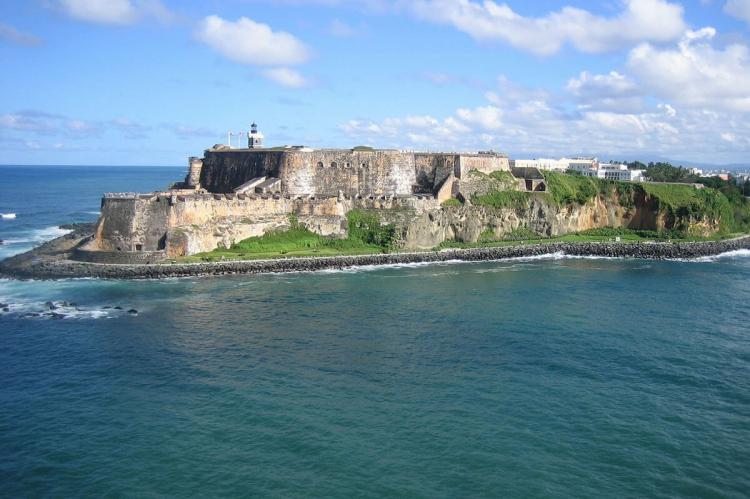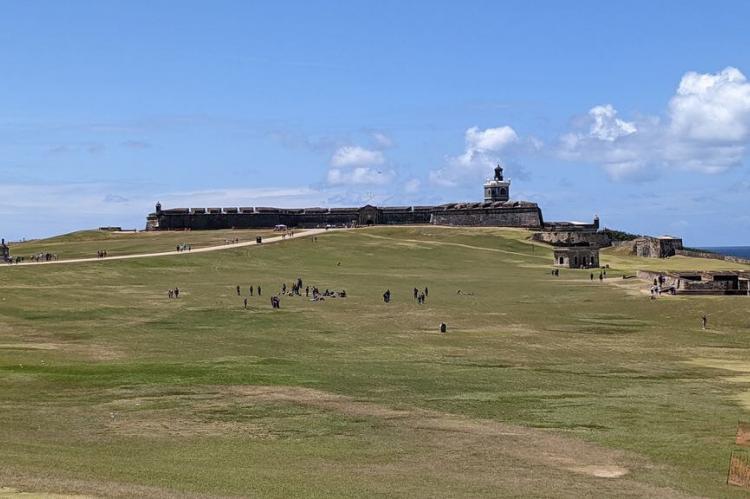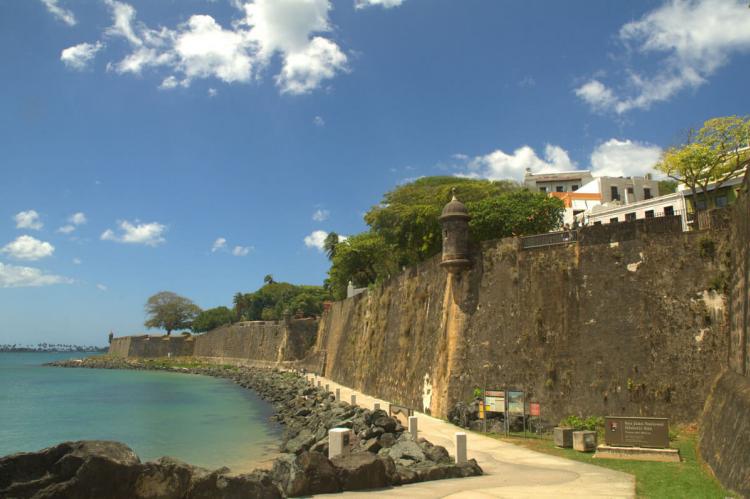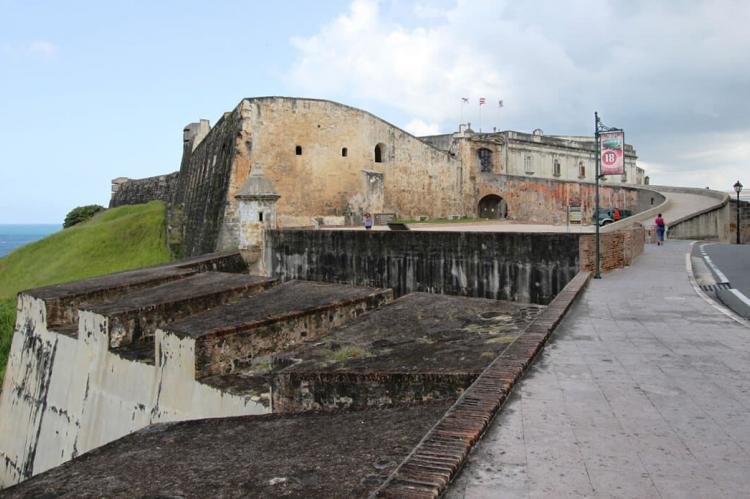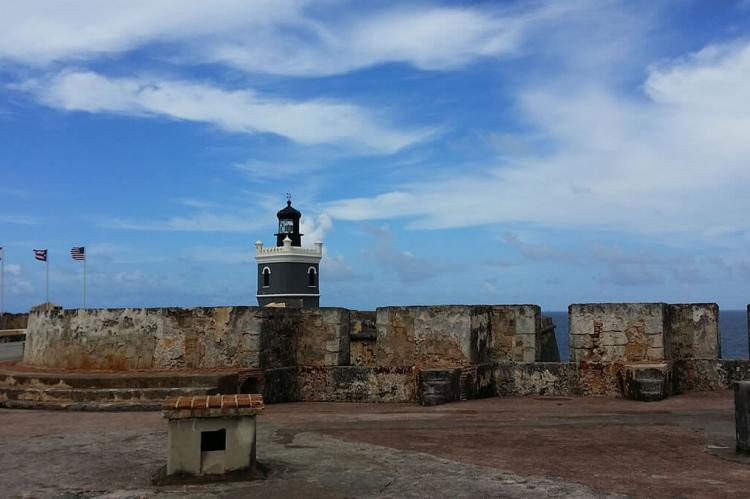La Fortaleza and San Juan National Historic Site: Fortress of the Spanish Empire
Nestled within the heart of Old San Juan, Puerto Rico, the La Fortaleza and San Juan National Historic Site stand as silent sentinels, bearing witness to history. This architectural ensemble represents the oldest European construction in the United States and one of the oldest in the New World.
La Fortaleza and San Juan National Historic Site: Fortress of the Spanish Empire
Nestled within the heart of Old San Juan, Puerto Rico, the La Fortaleza and San Juan National Historic Site stand as silent sentinels, bearing witness to centuries of history. Recognized as a UNESCO World Heritage Site, this architectural ensemble represents the oldest European construction in the United States and one of the oldest in the New World. The site is part of the more extensive Old San Juan Historic District, a living testament to the Spanish colonial influence in the Caribbean.
Strategic Significance
The defensive structures of La Fortaleza and San Juan, spanning from the 16th to the 20th centuries, were erected strategically to protect the city and the Bay of San Juan. These fortifications are a testament to the Spanish Empire's commitment to maintaining sovereignty over Puerto Rico, safeguarding Spanish commerce in the Caribbean basin, and protecting the Spanish treasure fleets voyaging to and from the New World.
The massive fortification of San Juan reflects the power and glory of the Spanish Empire, marking the beginning of European ascendancy in world affairs. The forts and the City Wall serve as fine examples of military architecture, reflecting the strategic brilliance of their design and construction.
Architectural Marvels: La Fortaleza and Casa Blanca
La Fortaleza, also known as "Palacio de Santa Catalina," has been resilient since its completion in the 1530s. Initially intended as a residence for governors, it has served multiple roles throughout the centuries, including fortress, arsenal, prison, and the dwelling of the Governor-General and, currently, the Governor of Puerto Rico. Casa Blanca, erected in 1525, provided early defense against Caribbean Indian attacks and served as the home for the Puerto Rican governor's family.
San Felipe del Morro
Recognizing La Fortaleza's vulnerability, the Spanish constructed the formidable Castillo de San Felipe del Morro in 1539. This round masonry tower, resembling a castle, played a pivotal role in the defense of San Juan Bay. Despite facing multiple invasions, including those by Sir Francis Drake in 1596 and the Earl of Cumberland in 1598, San Felipe del Morro stood resilient, eventually symbolizing Puerto Rican resistance.
San Cristóbal
Erected in 1634, Castillo de San Cristóbal served as a critical element in the defense line against land approaches from the east. Positioned on the northeastern edge of San Juan, it demonstrated the Spanish commitment to fortify the city comprehensively. The fort, designed with the principle of "defense in depth," proved its effectiveness during the British attack by Sir Ralph Abercromby in 1797.
San Juan de la Cruz (El Cañuelo)
Fort San Juan de la Cruz, established in 1606, complemented the defense of the harbor entrance, providing crossfire to El Morro and additional protection. It played a strategic role in the broader system of fortifications.
Resilience and Innovation
The fortifications withstood various challenges, including a Dutch invasion in 1625 and a devastating attack in 1598, which led to the burning of San Juan by the Dutch. Following these events, the Spanish devoted 150 years to constructing a defense line around San Juan, completed in 1678. This 50-foot high wall extended from El Morro to San Cristobal, fortifying the city on both sides.
In the late 18th century, Irish engineers Thomas O'Daily and Alexander O'Reilly orchestrated a transformative overhaul of El Morro, San Cristobal, and the defense wall. Their "defense in depth" strategy, involving multiple barriers of increasing strength, solidified San Juan as the most powerful stronghold in America. This redesign proved successful during the attempted British invasion of 1797, showcasing San Cristobal's barriers' strength and engineering brilliance.
Legacy and Preservation
San Cristobal stood for 100 years without firing a shot, symbolizing the strength and efficacy of its defense system. It wasn't until the Spanish-American War in 1898 that one of its guns fired the first shot into the Atlantic. The war's conclusion marked a shift in control, with the United States gaining Puerto Rico. Despite the change in sovereignty, the forts continued to serve their military purpose until they became national historic sites.
The La Fortaleza and San Juan National Historic Site, nestled within Old San Juan, encapsulates centuries of history, resilience, and architectural brilliance. From the strategic foresight of Spanish fortifications to the transformative redesign by Irish engineers, these structures stand as enduring symbols of Puerto Rico's past.
As a UNESCO World Heritage Site, they not only showcase the power and glory of the Spanish Empire but also symbolize the strength, determination, and cultural richness of the people who called these forts home. Today, they serve as educational beacons, allowing visitors to step back in time and witness the indomitable spirit of a bygone era.
Preservation Efforts
Preserving the La Fortaleza and San Juan National Historic Site is a collaborative effort between the National Park Service, the Government of Puerto Rico, and various cultural organizations. Ongoing restoration and maintenance work ensures these historic structures are preserved for future generations.
Visitors can explore the fortifications through guided tours, interactive exhibits, and educational programs that delve into the site's rich history and significance. The site also hosts cultural events and festivals, celebrating Puerto Rico's vibrant heritage.
Conclusion
The La Fortaleza and San Juan National Historic Site stand as a testament to the resilience and ingenuity of the Spanish Empire and the enduring spirit of the Puerto Rican people. These fortifications, once guardians of the Caribbean, now serve as guardians of history, preserving the stories and legacies of those who shaped the island's past. Visitors are invited to immerse themselves in this living museum, where the echoes of history resonate through every stone and rampart.
